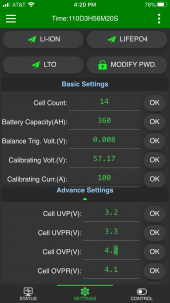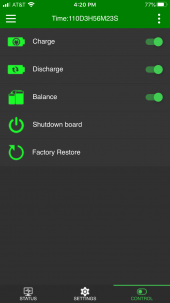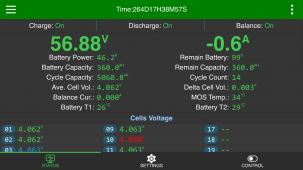offgridpower
Off Grid Simple Living AZ
- Joined
- Nov 19, 2020
- Messages
- 22
I just fired up my new system, but I have had to bypass the BMS because I can not get it to turn on. The BMS is a Heltec B1A24S15P 150A model. Before powering up the system I was seeing a voltage drop through the BMS, from 53V at the batteries to 34V on the other side of the BMS. When I opened the breaker to the batteries to power up the system, the voltage dropped to 9V. Also, the BMS will not power on. It has an power indication light that should light up. The manual said that it needs a 5V differential between the controller and the battery for it to stat up. How does one go about creating the necessary differential? I thought that the BMS would just power up once the MPPT controller started charging, but the controller cannot start up with only 9V.
This is the problem, how do I get 5V differential if the BMS will not let enough current through to start the controller? Also, should the BMS be restricting current when it is not turned on?
Any help would be greatly appreciated. I currently have a bypass in place and the system is operational, just without the BMS.
Trouble shooting so far: I have went through and double checked the individual cell wiring to the BMS, it is all wired up orrectly according to the factory diagram for a 16 cell battery.
This is the problem, how do I get 5V differential if the BMS will not let enough current through to start the controller? Also, should the BMS be restricting current when it is not turned on?
Any help would be greatly appreciated. I currently have a bypass in place and the system is operational, just without the BMS.
Trouble shooting so far: I have went through and double checked the individual cell wiring to the BMS, it is all wired up orrectly according to the factory diagram for a 16 cell battery.





